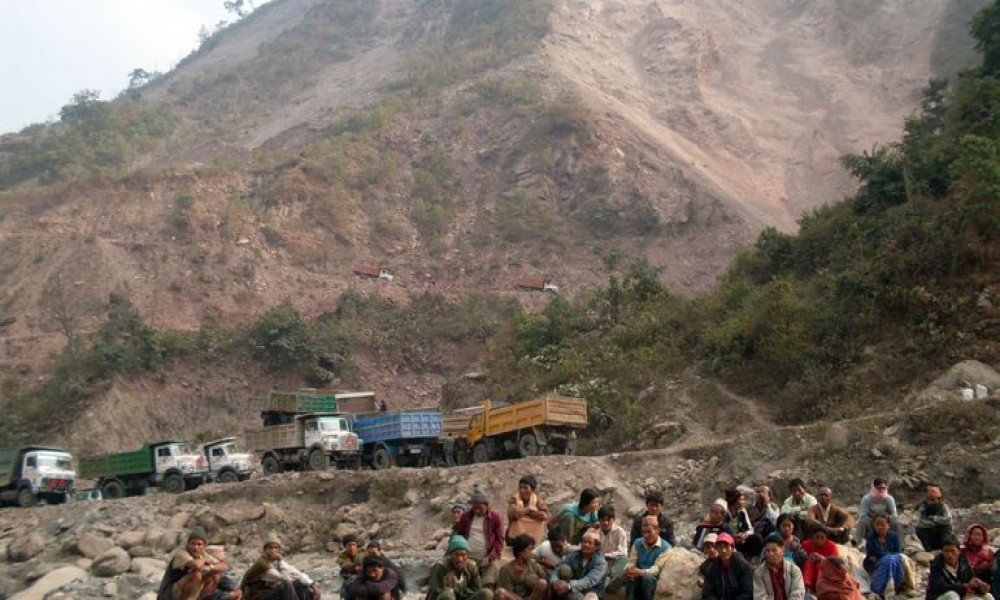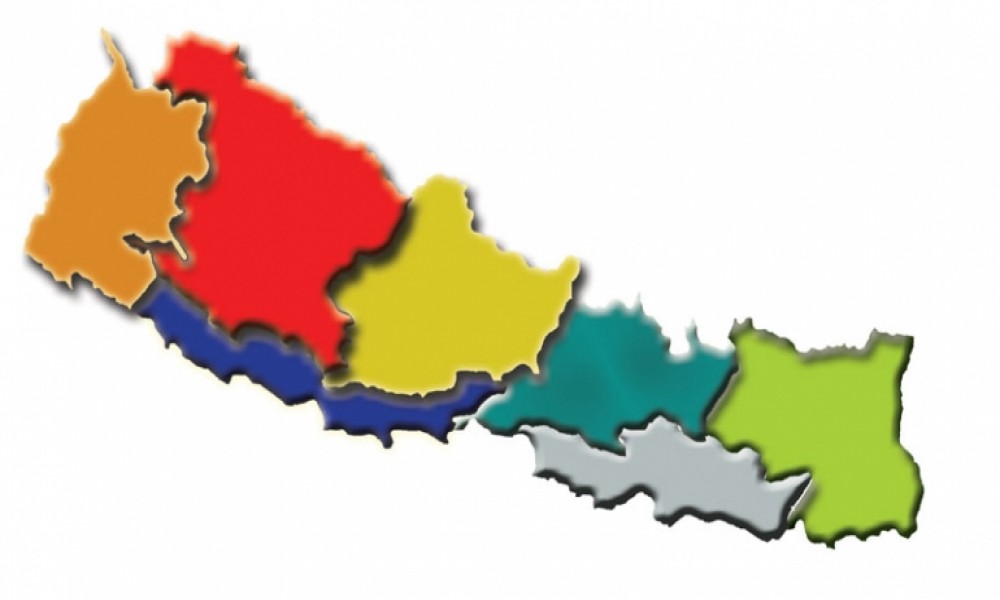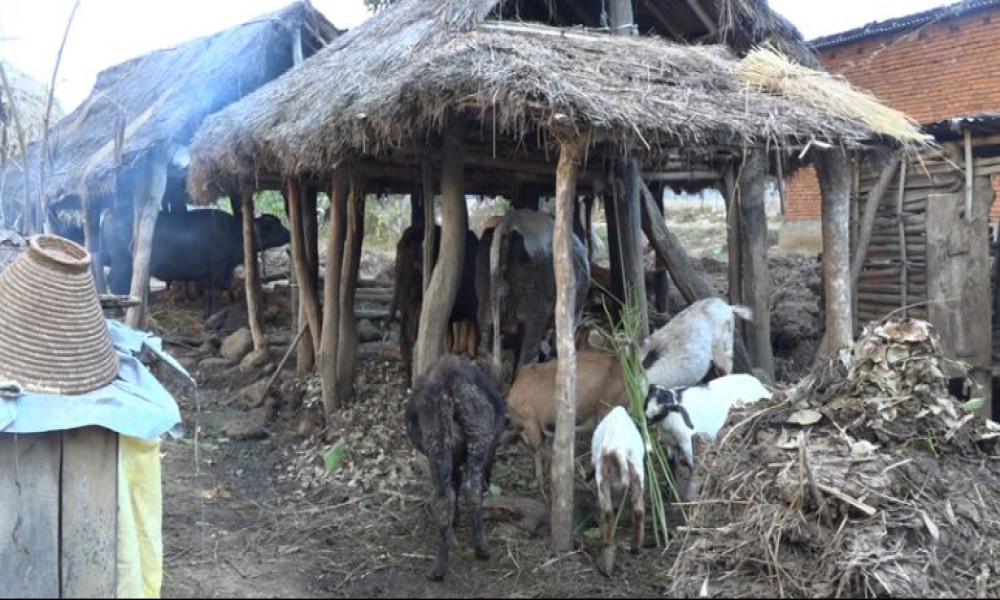Expressing our deep sadness over the massive destruction of life and property caused by the 25 April 2015 earthquake and subsequent aftershocks; expressing our heartfelt condolences to the affected families; hoping they are able to achieve recovery in time and worrying to the situation of the displaced peoples,
Considering that the ancestral lands of indigenous peoples, including Tamangsaling/Tamsaling, Wallo Kirat, Kirat, Tamuwan, and Newa Land were hardest hit by the earthquake; that seventy percent of the victims (8,810 dead and 22,310 injured according togovernment data as of 7 June 2015) belonged to indigenous groups such as Tamang, Gurung, Newar, Ghale, Thami, Sherpa, Hyolmo, Majhi and Sunuwar; that indigenous peoples faced discrimination based on their ethnic identity, language and distinct way of life even at a time when they suffered tremendous economic, cultural, spiritual and psychological damage,
Expressing grave concern over the fact that even days after the earthquake, the government had not begun rescue and relief work in the affected villages with predominantly indigenous population in timely manner; that the government still has not reached some of those areas; that the government’s one-door poli cy hindered rather than aided rescue and relief efforts of individuals and organizations; that the government’s response was characterized by confusion, delay, corruption, nepotism, politicization, a failure to coordinate external support,as well as ethnic, gender and other forms of discrimination,
Regretting the fact that the government did not ensure representation and participation of indigenous groups in bodies formed to undertake relief distribution, rehabilitation, and post disaster needs assessment; that it did not consult indigenous groups or seek their prior informed consent,or even mention them in its public statements,
Regretting the blatant violation of rights enshrined in international instruments to which Nepal is a party, that includes the International Convention on the Elimination of All Forms of Racial Discrimination, ILO Convention No.169, and the UN Declaration on the Rights of Indigenous Peoples,
Drawing the attention of the government, international communities and donor agencies to the fact that the government’s uniform policy and program on settlement development threatens the collective identity, culture and ways of life of indigenous peoples,
Drawing attention to the fact that the conference organized by the government to garner donor support on 25 June 2015 is taking place without the participation of indigenous peoples,
The 23 June 2015 conference of the indigenous peoples of the affected areas, indigenous political leaders, representatives of indigenous peoples’ organizations, civil society members, and indigenous experts and scholars hereby issues this declaration:
1. This conference honors the courage and the spirit of solidarity demonstrated by the local people in the earthquake-affected areas, who spontaneously came out to lead rescue, relief, rehabilitation and reconstruction work in the immediate aftermath of the disaster. We also express our commitment to becoming actively involved in rescue and relief, rehabilitation and reconstruction work in our respective areas.
2. People who face the threat of floods and landslides as a result of the earthquake and are at risk of losing their lives any moment must be immediately resettled with their prior informed consent; it must also be ensured that the resettlement will not have any adverse impact on them.
3. (a) The Reconstruction Corporation, chaired by the prime minister, as well as other state mechanisms for carrying out relief, rehabilitation and reconstruction work from the central to local level are controlled by one group (dominant), exclusionary and discriminatoryin terms of ethnicity, language, religion, culture, gender and region, andare driven by the vested interests of a few political parties. All such mechanisms should hence be immediately dissolved and new mechanisms should be built at every level ensuring meaningful participation of the earthquake victims representing indigenous peoples´ identity, language, religion, culture, gender and region.
3. (b) The chair of the aforementioned Corporation should be an independent citizen, and vice chair should be from indigenous community.
4. Shelters, homes, settlements, tangible and intangible heritage and other infrastructure must be built in a manner that respects, protects the distinct identity, culture and collective rights of indigenous peoples. Development initiatives should be based on recognition of indigenous peoples’ right to self-determine development.
5. Those who have lost their homes and have been displaced by the earthquake should be immediately resettled in safe locations, and arrangements should be made to provide them free education and health services, employment, and sources of livelihood in a manner that protects and promotesindigenous ways of life, culture, identity and traditional ties to land. Many indigenous people who still do not own land should be provided low-interest loans through a simple process.
6. All activities related to rehabilitation and reconstruction including needs assessment, evaluation, decision making, implementation and monitoring should guarantee the human rights enshrined in the Interim Constitution of Nepal 2007, ILO Convention No. 169 and UN Declaration on the Rights of Indigenous Peoples to which Nepal is a state party.
7. A mechanism must be in place to obtain the prior informed consent of indigenous peoples for resettlement and reconstruction activities that directly affect them.
8. Information on relief, rehabilitation and reconstruction should be provided to earthquake victims in their respective mother tongues.
9. A mechanism must be established for channelling national and international resources and support to indigenous peoples, Dalits and other disadvantaged groups in a swift and efficient manner.
10. The government’s one-door policy has resulted in the centralization of all resources in government mechanisms, which suffer from irregularities and have failed to distribute the resources to affected families, communities and settlements in an equitable and effective manner. Therefore, such a flawed policy should be immediately scrapped and arrangements should be made to ensure quick and effective delivery of aid through different channels.
11. Classification of victims and estimate of damages must be based on factual information; data disaggregated by ethnicity and gender must be made public; false and duplicated data must be corrected; names of those missing from the list must be added; and updated ethnic and gender disaggregated data on those who have received relief and other kinds of support as well as the amount of support provided should be regularly publicized.
12. The family size of earthquake victims should be determined on the basis of their current situation rather than on the basis of their landownership documents.
13. As the need to produce a citizenship certificate, proof of relationship, photo, etc. has resulted in the exclusion of many affected families from relief, rehabilitation and reconstruction programs, the process of obtaining such services must be made simpler.
14. To ensure transparency, effectiveness and accountability, budget for rehabilitation and reconstruction should be prepared during a mass gathering at the community level, and followed by public hearings and timely auditing.
15. The government must act immediately to ensure the protection of indigenous women, disabled persons, and children who have become victims of or face the risk of human trafficking.
Date: 23 June 2015, Kathmandu









